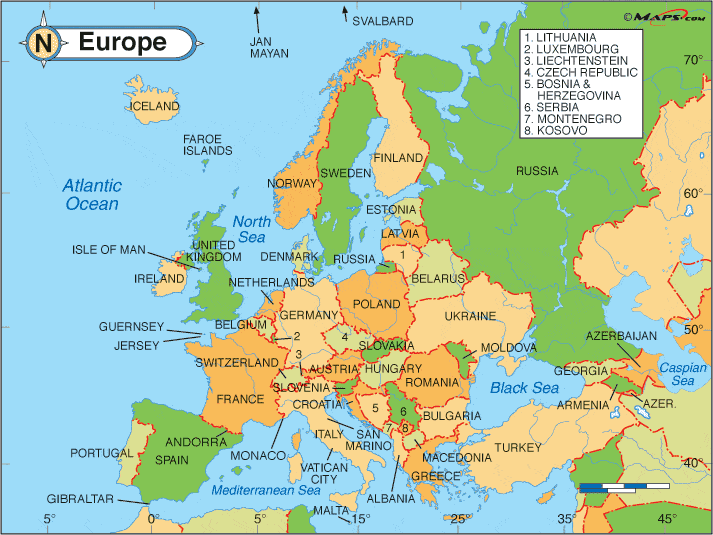Many residents of Britain, Italy, and Belgium imagine there to be a kind of north-south divide in their countries, marking a barrier between different social groups and regional characteristics.
Now a new study by MIT researchers reveals that such divides can be seen in the patterns of communication in those countries and others.
Telecommunications data in Britain, for instance, show that only about 9.5 percent of communications cross a line about 100 miles north of London. In Italy, only 7.8 percent of communications cross a line roughly along the northern border of the Emilio-Romagna region, above which lie the industrial and commercial metropolises of Milan and Turin.
These invisible borders, the researchers say, help us grasp the social, civic, and commercial interactions that exist in contemporary nations, and may be of use to government officials and other policy experts.
“We are looking at networks to think about how communities are structured over space,” says Carlo Ratti, an associate professor in MIT’s Department of Urban Studies and Planning, director of MIT’s Senseable City Lab, and a co-author of a new paper summarizing the results. The study is part of a larger effort, he adds, to see “how we can use these technologies to better understand the extent of constituencies and communities.”
The paper, “Delineating geographical regions with networks of human interactions in an extensive set of countries,” is being published this week in the journal PLoS ONE. The findings show that, for all the digital connectivity in civic life today, people still connect in “a geographically cohesive, connected set of communities,” says Stanislav Sobolevsky, a researcher at the Senseable City Lab and a co-author of the paper.
Sobolevsky emphasizes that the study, which covers seven countries, shows that examining communications networks allows analysts to reconstruct the regional nature of nations across a wide variety of geographic settings. The work builds on a previous analysis of Great Britain alone.
Mapping the linguistic divide
The paper was co-authored by Ratti, Sobolevsky, Senseable City Lab researcher Michael Szell, and Thomas Couronne and Zbignew Smoreda of Orange Labs, which is the research arm of the French telecommunications firm Orange.
In addition to Great Britain, Italy, and Belgium, the researchers examined France, Portugal, the Ivory Coast, and Saudi Arabia. The researchers used aggregated, anonymized data provided by Orange, British Telecom, Telecom Italia, and the Saudi Telecom Company. The researchers mapped the connections in two iterations: first at a larger scale, and then at a more local level, to see network patterns across and within regions and communities.
Some of the findings reaffirmed the strength of existing political and linguistic barriers. Belgium has long had a linguistic and social divide between the Flemish-speaking Flanders region, in the north, and French-speaking Wallonia, in the south. The study found that only 3.5 percent of the communications links in Belgium run between Flanders and Wallonia.
In France, patterns of communication closely mirrored the nation’s historical administrative regions, although the data also reveal a larger east-west divide running almost the length of the country.
Even when patterns of communication reflect pre-existing political or administrative lines, Ratti says, they can still represent “a more natural geography that emerges from people,” and can be studied over time.
 The researchers think this kind of mapping could be useful for governmental purposes, in cases where, say, lawmakers are rethinking political or administrative boundaries.
The researchers think this kind of mapping could be useful for governmental purposes, in cases where, say, lawmakers are rethinking political or administrative boundaries.
“You can see in advance how well newly proposed borders match with the actual human interactions,” Szell says.
Ratti acknowledges the work might also have private-sector uses for firms conducting new types of market analysis or other forms of research. Still, he says the Senseable City Lab is primarily interested in further studies along the lines of the current one.
“We’re more interested in the theory behind it,” Ratti says, “and in how this can contribute to a ‘science of cities.‘”


